P-40s of the 49th Fighter Group – Part 2: New Guinea
By the summer of 1942, the Japanese threat to Australia by direct invasion was largely over, but the threat posed by the Japanese takeover of New Guinea meant that Australia could still be isolated strategically, and later invaded. Two years of dreadful jungle combat in one of the most primitive places in the world began in the Spring of 1942 after the Japanese took Lae and Salamaua on the north coast. The Battle of the Coral Sea was fought that May to prevent a Japanese invasion of Port Moresby, the main Allied base, on the southern shore of the island. By the summer, Allied air power had grown enough to allow support of offensive operations against the Japanese. The first and most notable of these was the Buna Trail Campaign, which pitted two understrength, ill-equipped and inexperienced divisions of the Australian Army and American Army in a battle along the trail over the spine of the Owen Stanley Mountains, some of the most difficult terrain on the planet. That they eventually prevailed was a miracle.
The 49ers began operating from Three Mile Drome at Port Moresby in September 1942, with 7th and 8th Squadrons spelling each other, while 9th Squadron maintained alert at Darwin. It was at this period in the fall of 1942 that several members of the group began to build scores, including John D. Landers, who scored his fifth victory in December, being shot down moments later, and spending a terrifying three weeks in the jungle of the Owen Stanleys before encountering friendly natives who took him to the coast where he was rescued and returned to Port Moresby. In late 1942, 5th AF Commander General George Kenney began equipping at least one squadron in his P-39 and P-40-equipped units with the P-38, which he considered the best fighter available. 9th Squadron re-equipped with P-38s and was operational in January 1943, while 7th and 8th Squadrons continued to soldier on with the well-worn P-40Es and Kittyhawk Ia's, along with some P-40Ks that showed up in the spring of 1943. The 7th and 8th Squadrons had transferred full-time to New Guinea in March 1943, where they operated out of Dobodura following its capture.
In May 1943, Curtiss switched production to the P-40N, which would eventually account for half of all P-40 production. The first 200 P-40N-1s were lightened with the removal of 2 machine guns and the forward wing tanks, upping their speed to 378mph at 17,000 feet, the best performance of any P-40 sub-type. From P-40N #201, the two guns were restored, and from the P-40N-5, the wing tanks were restored, adding 2,500 pounds in total to the overall weight, and reducing top speed to 362 mph. The 49ers began receiving the P-40N in July 1943 and were finally able to retire their earlier mounts.
Curtis LeMay said the battle for air superiority over Tokyo was won in the skies of New Guinea. Japanese pilots had a saying: "No one ever returns alive from New Guinea." The JAAF called New Guinea “the graveyard of pilots,” which gives an indication of the long and hard-fought air battles that occurred over the largest island in the Pacific from early 1942 until the Japanese were finally driven out in the summer of 1944. An indication of what the Fifth Air Force achieved in this struggle came when U.S. Navy carrier planes raided the Philippines in September, 1944. Opposition was so light that Rear Admiral Robert Carey - Chief of Staff to Admiral William Halsey - wrote MacArthur's Chief of Staff, General Richard Sutherland that General George Kenney's pilots had “just about spoiled the war for our carriers.”
Among the pilots who came to the 49th FG at this time was 1st Lt. Robert DeHaven of Los Angeles, the cousin of Hollywood star Gloria DeHaven; the DeHavens are a well-known family in Hollywood, beginning with patriarch Carter DeHaven, a stunt man and later cinematographer beginning in the silent era. Robert DeHaven arrived at the same time as the P-40Ns, and scored his first victory on July 14, 1943 and his fifth on December 10. He participated in the offensives that took Buna, Lae, the Markham Valley, Hollandia and Biak Island by the summer of 1944. His score during this period of 10 enemy aircraft by January 1944 was tied for the highest P-40 score by a USAAF pilot in the SWPA. He preferred the P-40 over the P-38. In “Fire in the Sky: The Air War in the South Pacific,” DeHaven explains:
“After training I requested duty in the Pacific and I requested being posted to a P-40 squadron and both wishes were granted. This was early in 1943 and most pilots already desired more advanced types and some thought my decision a mistake. Yet I had been inspired by the deeds of the Flying Tigers. We had also heard accounts that the P-38 was difficult to bail out of because of its twin-boom tail and that it was difficult when flying with one engine. I also knew that P-38s were still rare in the theater and I wanted to get into the war as soon as possible. That wish, too, was granted. I never regretted the choice.
“If you flew wisely, the P-40 was a very capable aircraft. In many conditions, it could out turn a P-38, a fact that some pilots didn't realize when they made the transition between the two aircraft. The P-40 kept me alive and allowed me to accomplish my mission. The real problem with it was lack of range. As we pushed the Japanese back, P-40 pilots were slowly left out of the war. So when I moved to P-38s, an excellent aircraft, I did so not because I believed that the P-40 was an inferior fighter, but because I knew the P-38 would allow us to reach the enemy. I was a fighter pilot and that was what I was supposed to do.”
Following the invasion of Biak in June 1944, the 7th Fighter Squadron transitioned to P-38s in August-September 1944 for the Philippine invasion, and the 49ers finally became an all-P-38 outfit. DeHaven would score four more victories in the Philippines before rotating home in February 1945.
In 1949, following a brief Hollywood acting career, DeHaven became Howard Hughes' chief test pilot, and by the mid-1950s he was Director of Flight Test, running the Aviation Test Section for Hughes Aircraft all on his own “as if he was Howard,” in the words of one who worked with him, a position he held until his retirement in 1987. During his time at Hughes, DeHaven was responsible for the development of the Hughes OH-6 helicopter series, and for getting the company involved in the development of air-to-air guided missiles.
In 1946, he married big band singer Connie Haines, with whom he had two children before divorcing in 1960. He remarried in 1967, and died in Encino, California, in 2008. He was one of the founders of the American Fighter Aces Association in 1960, and was President of the group during the 1970s. In 1987, Carter DeHaven III (who had produced "Hoosiers") was trying to get hold of a screenplay I had written; knowing my interest in World War II aviation, he invited me to lunch with his uncle Robert. As with many World War II fighter aces I have met over the years, a few knowledgeable questions (and a couple of martinis) resulted in a “colorful” conversation, the result of which was that I became very interested in learning more about the 49ers, a unit I wasn't that familiar with at the time.
The two P-40Ns here are both from Hasegawa. Jay Miller's "Island Queen" is the 1/48 kit, with 3 Guys Replicas decals and the True Details cockpit (using the kit floor since the TD set is made originally for the Mauve kit), and Squadron vac canopy. Robert DeHaven's "Rita 13" is the 1/32 kit OOB other than Eduard p-e interior detail and Zotz Decals.
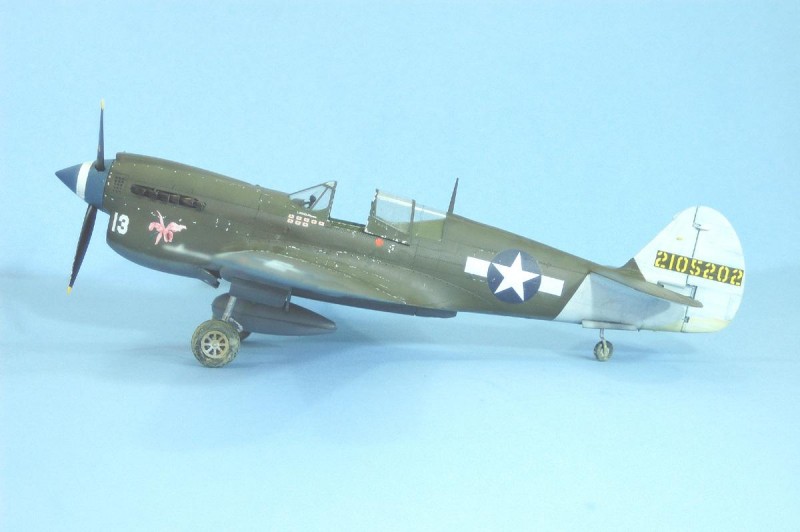
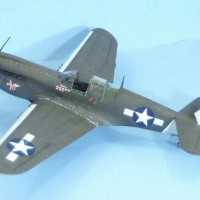

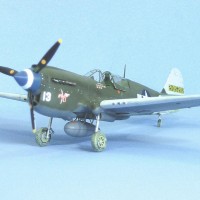
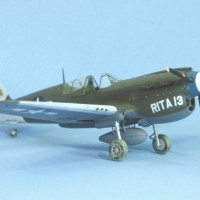
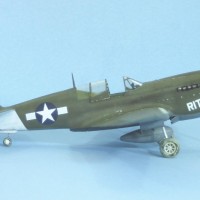
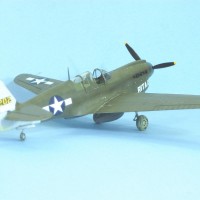
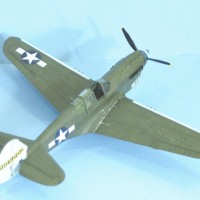
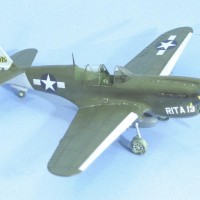
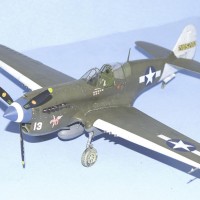

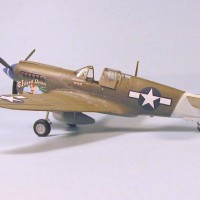
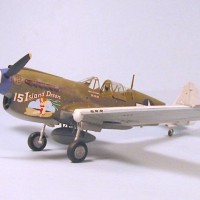
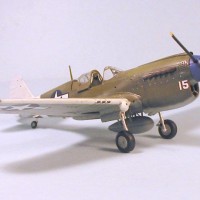
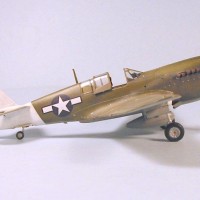
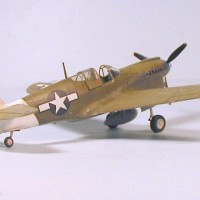
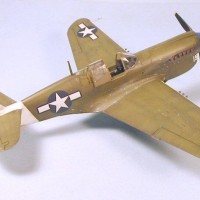
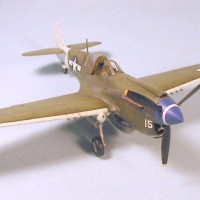

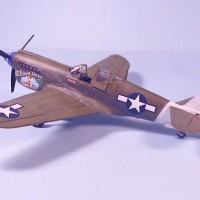
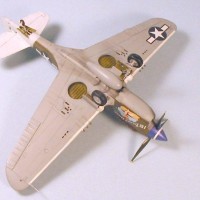
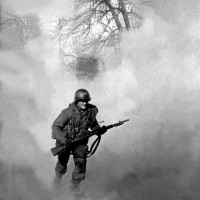
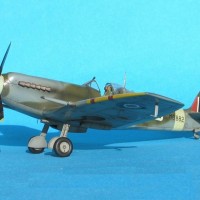


Great "white tails", Tom.
Excellent article which is a Ten. The model is a Ten. Wheres the book on P-40's of the South Pacific? It would be logical that it would follow the article and model if rated. Here I 'm with a AMT P-40N. What to do next in the pile hmmmm.
Two thumbs up
Marvelous Warhawks, Tom, and thanks for writing up the article. One thing I'll always remember from Robert DeHaven's stories will no doubt be how he had a succession of female penpal's names painted on his P-40 so that he could send each their own photos of him with "their" machine. Romantic opportunism at it's best and a funny story. Judging by the decals available, it seems that Rita will remain a head above the rest.
Yeah, he told me that one after the third martini and it was good for a laugh.
Very well written and highly informative writeup. 10 from me, too!